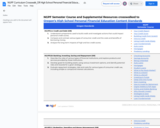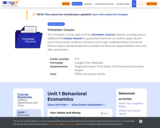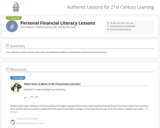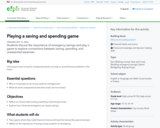
Students match tax types to definitions and then apply their knowledge to tax scenarios.
- Subject:
- Business and Communication
- Finance
- Material Type:
- Lesson Plan
- Author:
- Consumer Financial Protection Bureau
- Date Added:
- 06/25/2024

Students match tax types to definitions and then apply their knowledge to tax scenarios.

Money Stories is a series of 8 lessons dealing with financial matters of everyday life. The Money Stories Program originated when Elders at the Aboriginal Seniors Resource Centre (in Winnipeg, MB) had the idea that money management training should be taught to Indigenous youth with a focus on Indigenous values, culture, and traditional teachings. The Money Stories Curriculum was then developed and tweaked by current and past SEED Winnipeg Inc. staff.
Everyone is welcome to review the Money Stories Curriculum presented here. Note: the attached materials are read-only. SEED Winnipeg Inc. kindly requests that organizations contact them directly via email or phone to request a printable version of the instructor’s manual and to order printed versions of the workbook (there will be a fee to recover costs for the workbook). Interested organizations should have like-minded goals and values that support individuals in any of these areas: financial empowerment, education, job readiness, or life skills training. Someone with facilitation experience is an asset.

This crosswalk aligns Next Gen Personal Finance's free curriculum to Oregon's High School Personal Financial Education Content Standards. Each standard is matched with the corresponding lessons from NGPF's Semester Course and supplemental resources. Each lesson links directly to NGPF's website, where you can find both the Student Activity Packet and Lesson Guide/Answer Key.

The Trimester Course uses 41 of the Semester Course’s lessons and features an additional 7 unique lessons to guarantee there are no content gaps. By the end of this course, students will have a thorough understanding of personal finance topics and be prepared to handle the financial responsibilities that exist after graduation.

This collection contains lessons that cover the standards for Personal Financial Literacy.

Students discuss the importance of emergency savings and play a game to explore connections between saving, spending, and unexpected expenses.

With the passage of Senate Bill 3, beginning with the class of 2027, the Oregon diploma requirements will include 0.5 credit in Personal Financial Education and 0.5 credit in Higher Education and Career Path Skills. Visit the Overview to learn more about these new requirements.

Students read descriptions of common places to store their money and weigh the benefits and risks of each to decide which one(s) fit their financial goals.

Students read a handout about taxes and respond to questions to explore the relationship between working and taxes.

Students analyze statements about taxes to better understand how taxes affect people’s paychecks.

Unit plans, videos, and interactive practice aligned to Utah's General Financial Literacy (GFL) course standards.